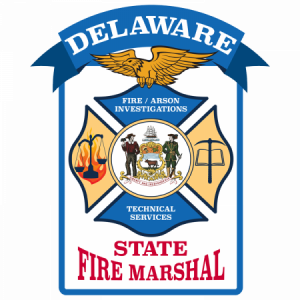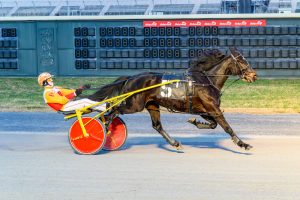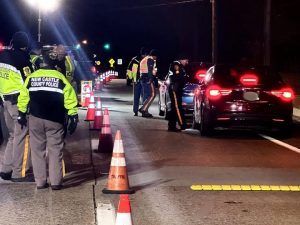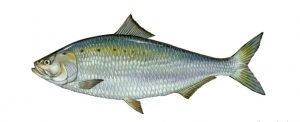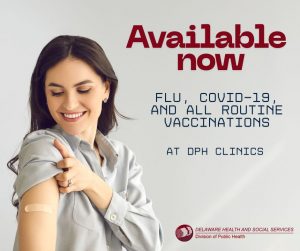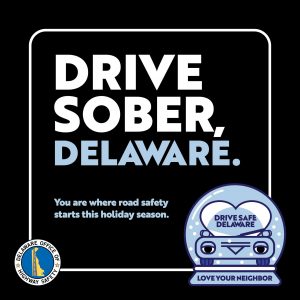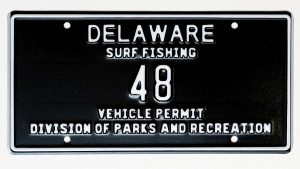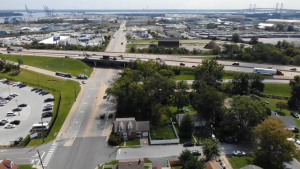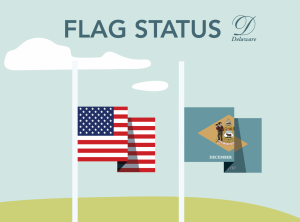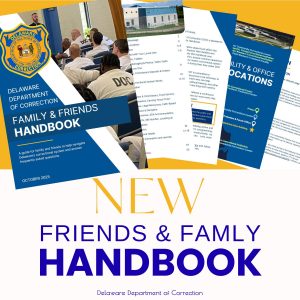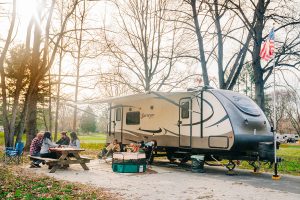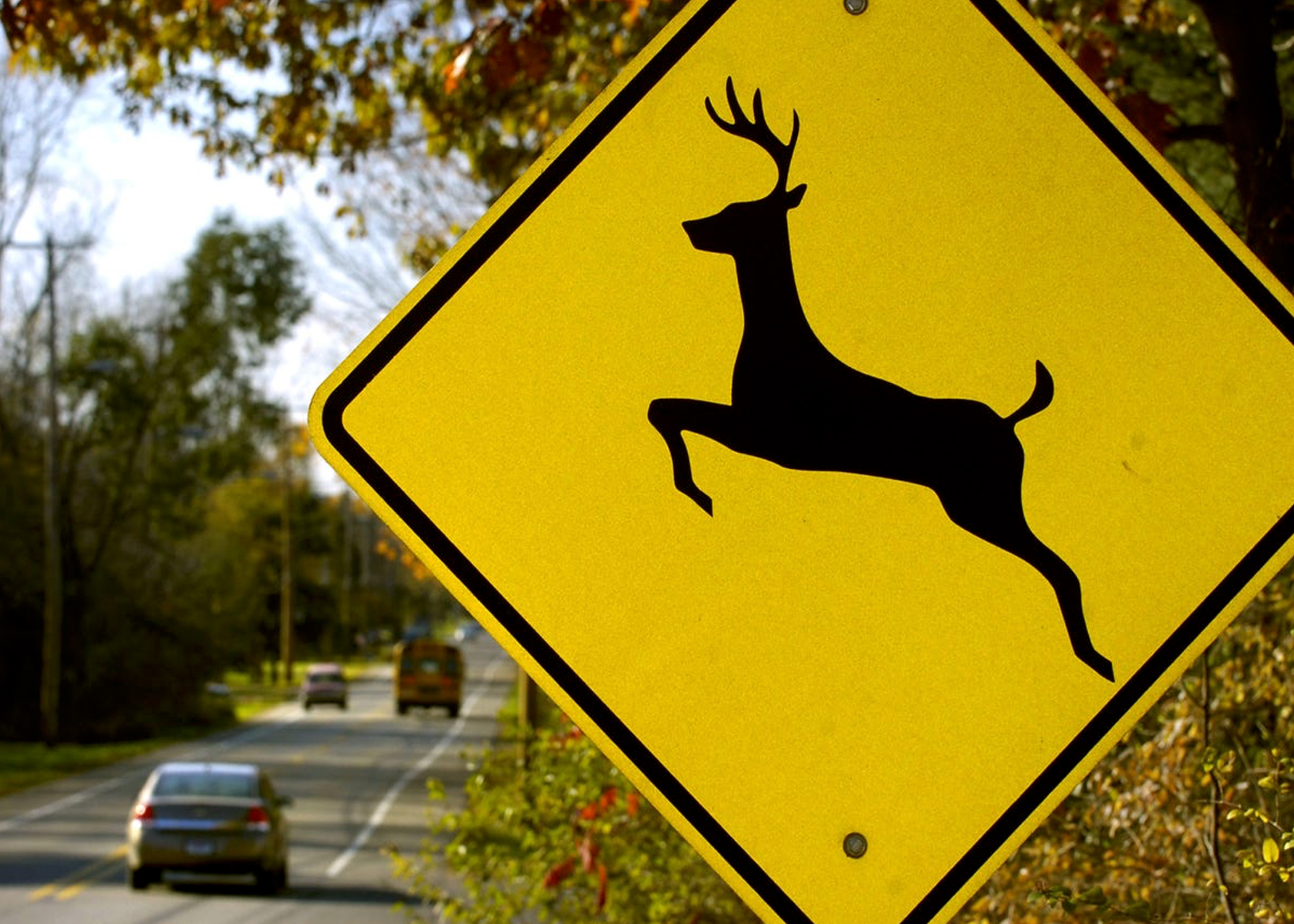
Onset of peak deer activity in Delaware during mating season calls for vigilance by drivers at dawn, dusk and overnight. /DNREC photo
Extra Vigilance on Roads Called for as Days Shorten and Deer Become More Active Morning and Evening
Use extra caution on the roads during the deer mating season is the warning to Delaware drivers from the Department of Natural Resources and Environmental Control, the Office of Highway Safety (OHS) within the Department of Safety and Homeland Security and Delaware State Police (DSP). Late October through November is the peak period for deer-related crashes, as that’s when white-tailed deer males (bucks) are in their annual pursuit of females (does) in the First State. That pursuit leads to more deer crossing roadways in the shorter days ahead – especially after the Nov. 6 change from daylight saving time back to Eastern Standard Time.
White-tailed deer breed only once a year. The mating season, which carries on from late October sometimes into mid-December, and peaks from Nov. 11 to 20, is referred to as the rut. “During this timeframe, deer activity increases substantially as bucks search for mates,” said DNREC Division of Fish and Wildlife Environmental Program Manager Joe Rogerson. “If a buck’s pursuit of a doe takes them across a roadway, it doesn’t matter if it’s a rural road or Route 1, a collision with a vehicle could occur. Delaware drivers need to pay particular attention while behind the wheel this time of year, especially when driving on roads bordered by woods or agricultural fields, since that’s where deer are more apt to run out onto the roadway.”
With the end of daylight saving time, more motorists will be traveling to and from work and school around dawn and dusk, when deer are typically most active. According to the latest Delaware Office of Highway Safety data, deer-vehicle collisions occur most often between 5 and 7 a.m. and spike again from 5 to 10 p.m. – which includes the timeframe when many people are heading home for the evening. “With shorter daylight hours during the fall, we see an increase in deer along our roadways,” said Kimberly Chesser, Office of Highway Safety director. “We remind drivers to be alert, pay attention to the road and surroundings, and be more cautious during these times. Slow down and watch for deer crossing signs that indicate areas where deer are known to cross the road. Never drive impaired and always buckle up, every trip, every time.”
The average white-tailed deer in Delaware weighs about 140 pounds, with larger bucks going 200 pounds or more, according to the DNREC Division of Fish and Wildlife. Hitting an animal that size may cause injury to drivers or passengers, or trigger an accident involving other motorists – besides doing costly damage to vehicles involved in such a collision.
In 2021, 1,849 or 95% of the 1,945 vehicle-animal collisions investigated by Delaware State Police involved deer. Of that number, 821 collisions with deer occurred in October, November and December, the months spanned by the deer mating season in Delaware, when drivers are warned to be most attentive. “Deer collisions typically increase during this time of the year, so it is essential for drivers to remain vigilant,” said Sergeant India Sturgis, DSP director of public information. “Although deer are more active at dawn and dusk, they are also active during broad daylight. Wearing your seatbelt, reducing your speed, and driving alert may not prevent all deer-related collisions, but can certainly reduce injuries and vehicle damage if you are involved in a collision.”
Based on reported insurance claims from July 1, 2021 to June 20, 2022, State Farm Insurance ranked Delaware 32nd nationally with drivers having a 1-in-122 chance of being involved in an animal collision, with deer accounting for the majority of animal-related crashes and vehicle damage claims. To avoid a large out-of-pocket expense, AAA Mid-Atlantic, which provides coverage for Delaware motorists, recommends purchasing a policy that includes comprehensive coverage for collisions with deer or other animals. AAA Mid-Atlantic also notes the average claim submitted for a deer strike is more than $5,000.
DNREC, OHS, DSP and other police agencies and auto insurance companies all agree: the best way to prevent or lessen the severity of deer collisions is attentive driving, which includes avoiding distractions that can take a driver’s eyes off the road, such as mobile phones, adjusting the radio, eating while driving, or passenger activities.
Additional safety tips include:
- Always wear your seatbelt to reduce your risk of injury in a collision.
- Reduce speed at night, on curves and in bad weather.
- Switch to high beams when there is no oncoming traffic to better reflect the eyes of deer on or near the roadway and scan the sides of the road as well as what’s directly ahead.
- Watch for “Deer Crossing” signs marking commonly-traveled areas by deer on the road ahead. Slow down immediately and proceed with caution until past the crossing point.
- Be aware deer usually travel in groups, so if you see one deer, there are likely to be others.
- Slow down and blow your horn with one long blast to frighten deer away. Do not depend on devices such as deer whistles, deer fences and reflectors to deter deer, as these devices have not been proven to reduce deer-vehicle collisions.
- Do not swerve to miss a deer – brake and stay in your lane. Losing control of your vehicle, crossing into another lane, hitting an oncoming vehicle, or leaving the roadway and striking a tree or utility pole will likely result in a much more serious outcome than hitting a deer.
- If you hit a deer, and your vehicle is damaged, stop at the scene, get your car off the road if possible, turn on your vehicle hazard lights – and if you or anyone in your vehicle are injured, call 911.
- Do not touch the animal or get too close; injured deer may bite or kick and are capable of causing serious injury.
About DNREC
The Delaware Department of Natural Resources and Environmental Control protects and manages the state’s natural resources, protects public health, provides outdoor recreational opportunities and educates Delawareans about the environment. The DNREC Division of Fish and Wildlife conserves and manages Delaware’s fish and wildlife and their habitats, and provides fishing, hunting, wildlife viewing and boating access on nearly 65,000 acres of public land. For more information, visit the website and connect with @DelawareDNREC on Facebook, Instagram, Twitter or LinkedIn.
About Delaware Office of Highway Safety
The Office of Highway Safety (OHS) is committed to improving the safety of Delaware’s motoring public by focusing on behavioral traffic safety issues such as impaired driving, seat belt use, speeding, child passenger safety, pedestrian and bicycle safety, motorcycle safety, and teen driving issues. FAQs can be answered at ArriveAliveDE.com. You can follow the Delaware Office of Highway Safety by visiting us at: ArriveAliveDE.com, OHS, Facebook, Twitter, Instagram, LinkedIn, Snapchat, and YouTube.
Media Contacts:
DNREC: Joanna Wilson, joanna.wilson@delaware.gov, Michael Globetti, michael.globetti@delaware.gov
OHS: Jason Coleman, jason.coleman@delaware.gov
DSP: Sergeant India Sturgis, india.sturgis@delaware.gov; Senior Corporal Jason Hatchell, jason.hatchell@delaware.gov;
###


